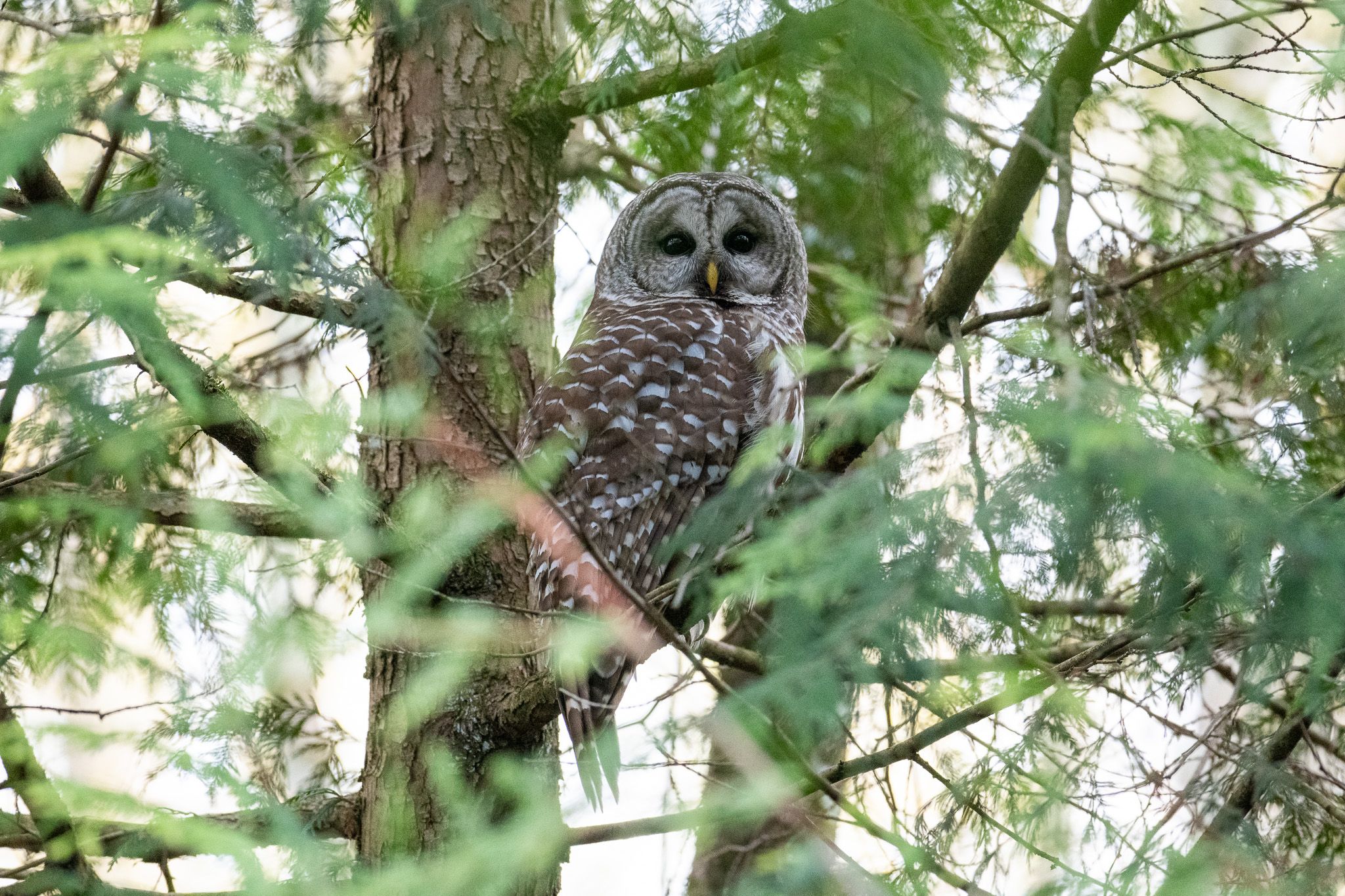About the Barred Owl
The Barred Owl (Strix varia) is a species documented in our database. Learn more about this species through the information below.
Conservation Status
Barred Owl is currently listed as Least Concern on the IUCN Red List.
Population Trend
stable
Current Threats
- Habitat loss and fragmentation
- Climate change
Photo Gallery

2 photos available
Geographic Distribution
Distribution by Region
Eastern United States
Continent: North America
Country: United States
Region: Eastern states, from Maine to Florida
Central United States
Continent: North America
Country: United States
Region: Central states, from Texas to Illinois
Southeastern Canada
Continent: North America
Country: Canada
Region: Provinces of Ontario and Quebec
Distribution Overview
The Barred Owl is a widespread species found in eastern and central North America, inhabiting forests, woodlands, and urban areas.
Quick Facts
- Size
- 43 - 61 cm
- Weight
- 500 - 1000 g
- Lifespan
- up to 10-15 years years
- Diet
- Small mammals (voles, mice, rabbits)Birds (songbirds, game birds, waterfowl)Reptiles (snakes, lizards)Amphibians (frogs, toads)Insects (grasshoppers, crickets, beetles)
Habitat
ForestsWoodlandsUrban areasSwamps
Behavior
- Hunts at night, using acute hearing and exceptional vision to locate prey
- Perches in trees or on power poles, scanning for prey
- Engages in monogamous breeding, with pairs forming during breeding season
- Females lay 2-4 eggs, which are incubated for approximately 30 days
- Both parents care for young, which leave the nest after approximately 6-8 weeks